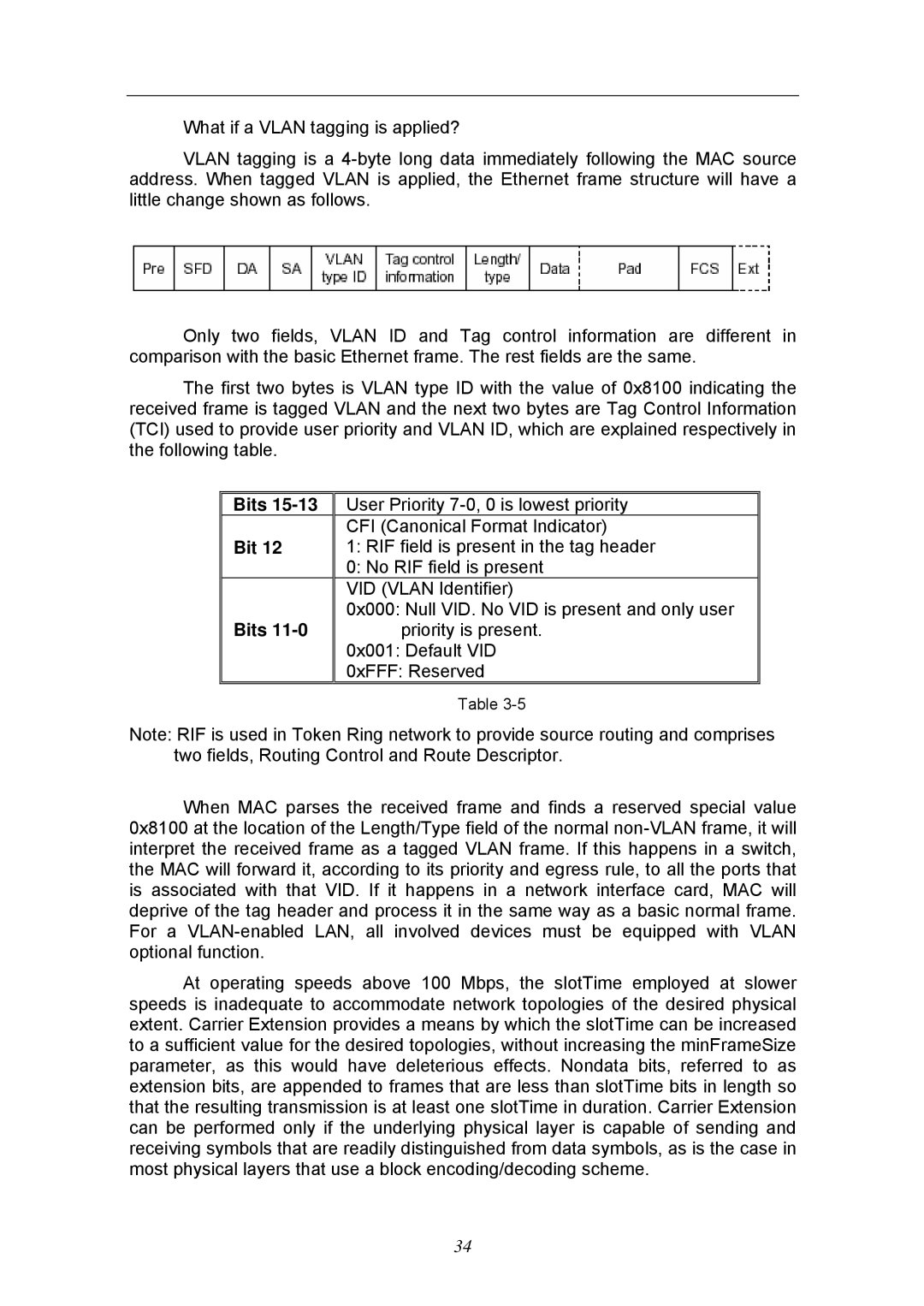
What if a VLAN tagging is applied?
VLAN tagging is a
Only two fields, VLAN ID and Tag control information are different in comparison with the basic Ethernet frame. The rest fields are the same.
The first two bytes is VLAN type ID with the value of 0x8100 indicating the received frame is tagged VLAN and the next two bytes are Tag Control Information (TCI) used to provide user priority and VLAN ID, which are explained respectively in the following table.
Bits 15-13
Bit 12
Bits
User Priority
CFI (Canonical Format Indicator)
1:RIF field is present in the tag header
0:No RIF field is present VID (VLAN Identifier)
0x000: Null VID. No VID is present and only user priority is present.
0x001: Default VID
0xFFF: Reserved
Table
Note: RIF is used in Token Ring network to provide source routing and comprises two fields, Routing Control and Route Descriptor.
When MAC parses the received frame and finds a reserved special value 0x8100 at the location of the Length/Type field of the normal
At operating speeds above 100 Mbps, the slotTime employed at slower speeds is inadequate to accommodate network topologies of the desired physical extent. Carrier Extension provides a means by which the slotTime can be increased to a sufficient value for the desired topologies, without increasing the minFrameSize parameter, as this would have deleterious effects. Nondata bits, referred to as extension bits, are appended to frames that are less than slotTime bits in length so that the resulting transmission is at least one slotTime in duration. Carrier Extension can be performed only if the underlying physical layer is capable of sending and receiving symbols that are readily distinguished from data symbols, as is the case in most physical layers that use a block encoding/decoding scheme.
34
